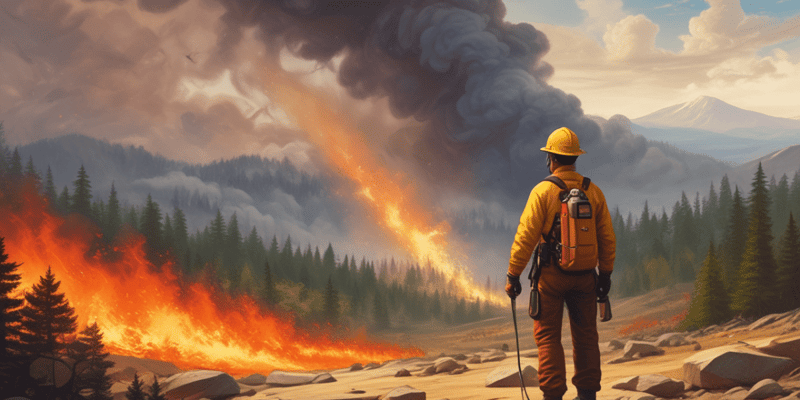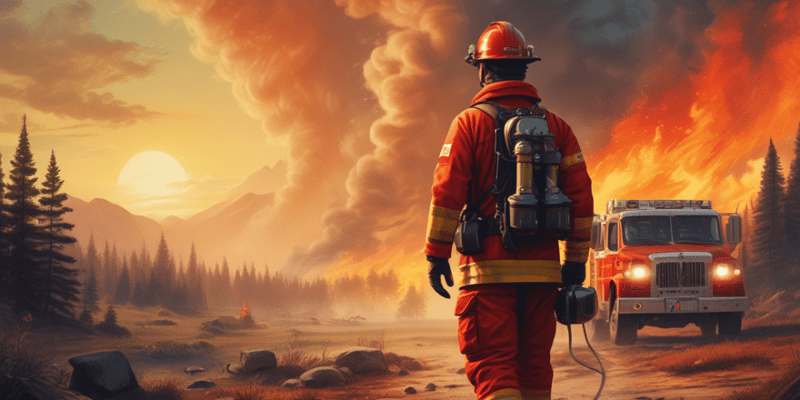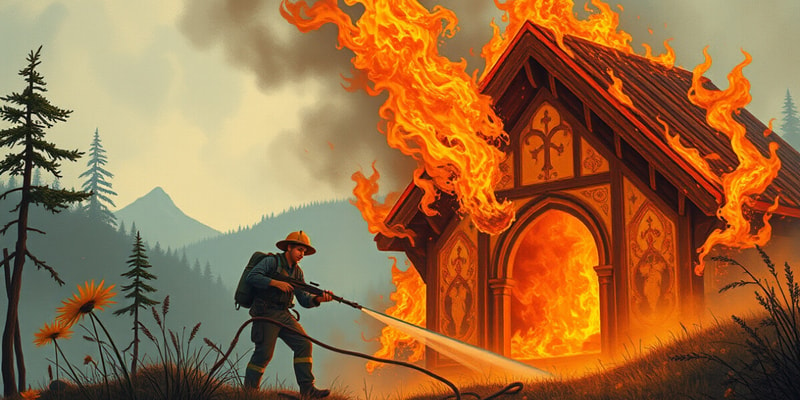Questions and Answers
What time of day is fire danger usually the greatest due to ease of ignition and speed of flame fronts?
Which of these factors primarily creates dangerous convection currents, resulting in erratic fire behavior and spot fires?
What aspect of weather conditions significantly impacts fire behavior in fine fuels like grasses?
How does fire generally behave on an uphill slope?
Signup and view all the answers
What needs to be addressed after an area has burned to prevent new fires from starting?
Signup and view all the answers
Which is a recommended preparation strategy for companies with significant brush fire potential?
Signup and view all the answers
Which condition causes a significant increase in fire intensity?
Signup and view all the answers
What feature of wildland fires can transport fire to new areas in advance of the main fire?
Signup and view all the answers
What is a major challenge when dealing with fire in rough and unstable country?
Signup and view all the answers
What natural features should be given particular attention when surveying an area prone to brush fires?
Signup and view all the answers
Study Notes
Wildland Fires
- Weather conditions change constantly and affect fire behavior, making it essential for the IC to stay aware.
- Hot and dry conditions lead to extremely rapid fire spread, and a small decrease in relative humidity significantly increases fire intensity.
- The fire danger is highest between 12:00 and 16:00 due to ease of ignition and speed of flame fronts, which can move several times faster than a human can run.
- Wildland fires create convection currents, causing erratic fire behavior and spot fires far in advance of the fire head, similar to the effects of heavy winds.
Fuel
- The Tulsa area has relatively light fuels that burn rapidly, leaving behind heavier fuels like tree stumps that require mop-up.
- Mop-up is necessary to prevent embers from igniting new fuel.
Topography
- Fires spread uphill more rapidly than downhill, with a tendency to crown over the top and start spot fires down the receding slope.
- Access to rough and unstable terrain poses a significant problem, and companies should survey their area considering fuel, topography, and exposure to structures.
- Particular attention should be paid to access roads and natural fire breaks.
Studying That Suits You
Use AI to generate personalized quizzes and flashcards to suit your learning preferences.
Description
Quiz on key factors to consider during wildland fires, including weather conditions, as part of the Tulsa Fire Department's Emergency Operating Guidelines.




